
Tech & Sci
12:53, 22-Apr-2017
Tianzhou-1 successfully docks with Tiangong-2 space lab for first time
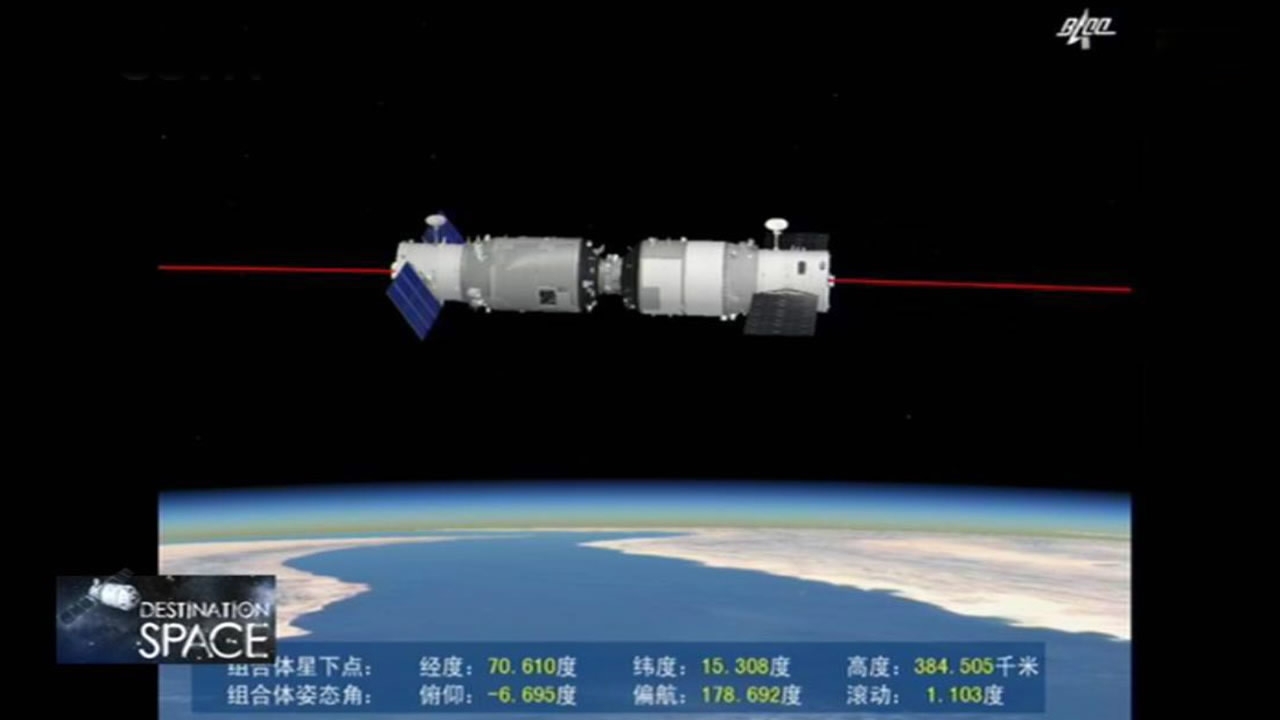
China’s first cargo spacecraft Tianzhou-1 has successfully completed its automated docking with the Tiangong-2 space lab on Saturday around noon, two days after blasting off from the Wenchang Spacecraft Launch Site in Hainan Province.
The rendezvous and docking process began when the two spacecraft were dozens of kilometers away. The two vessels were able to read each other’s relative positions and velocity.
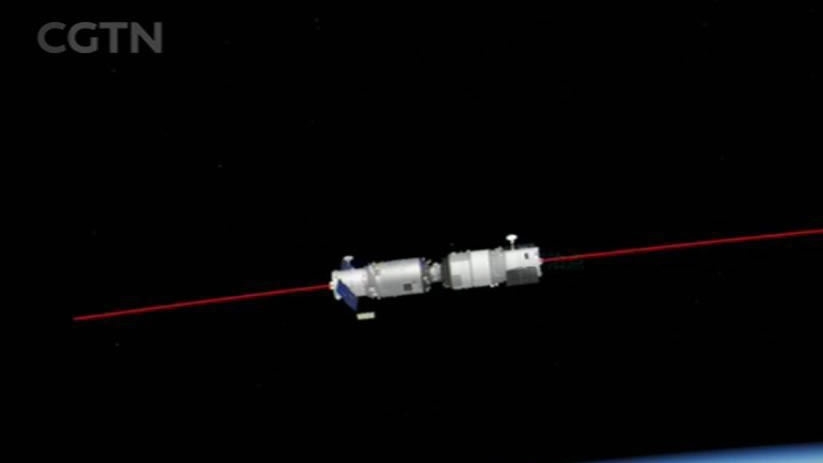
CGTN Photo
CGTN Photo
The next phase of the automatic approach and docking operations began when the two vehicles were just five kilometers apart. Then the Tianzhou-1 moved towards the remaining three parking points, at 400, 120, and 30 meters.
At each of these parking points, the relative position of Tianzhou-1 was assessed by ground controllers before commands were given.
After the docking, the new combined craft will continue to orbit for two months, during which liquid propellant will be transferred to the orbiting space station to test the ability to refuel the space station. The cargo ship will refuel the space lab three times.

CGTN Photo
CGTN Photo
In-orbit liquid propellant transfer is critical to ensure a sustainable fuel supply for the spacecraft, and is a cornerstone in building China's space station.
After two months together, the two spacecraft will separate and dock for a second time. Tianzhou-1 will dock with the other side of Tiangong-2.
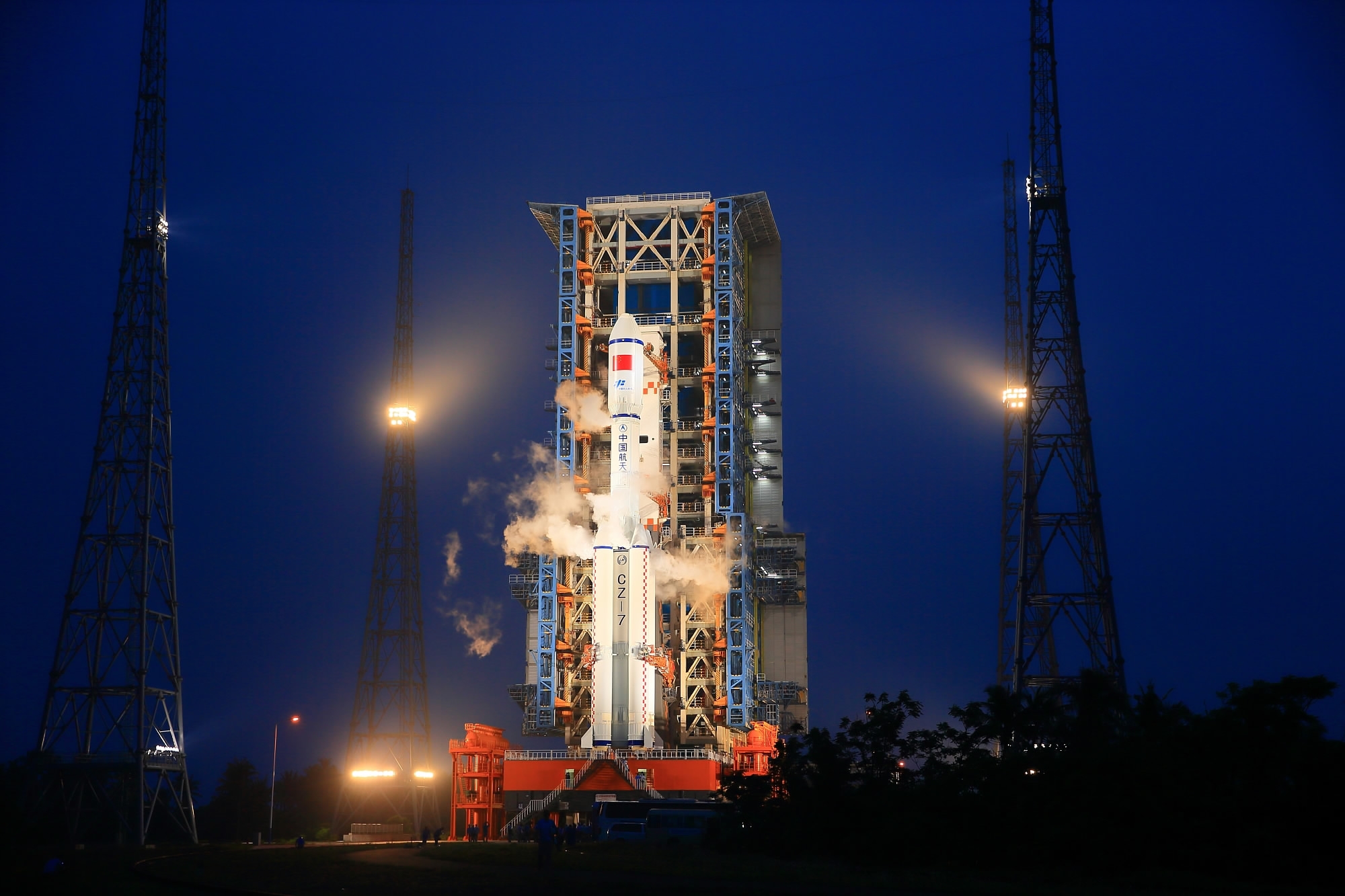
Countdown of Tianzhou-1 launch mission at Wenchang Spacecraft Launch Site in south China’s Hainan Province, April 20, 2017. /VCG Photo
Countdown of Tianzhou-1 launch mission at Wenchang Spacecraft Launch Site in south China’s Hainan Province, April 20, 2017. /VCG Photo
The second docking maneuver will be done as practice for future missions. China’s planned space station will be made up of several modules, so different docking procedures need to be rehearsed.
A third docking maneuver will also be done to test a so-called “express” link-up to shorten the process. The first two docking moves are expected to take a few days to complete. The express link-up cuts this down to six hours. If successful, China will be the second country to complete the procedure after Russia.
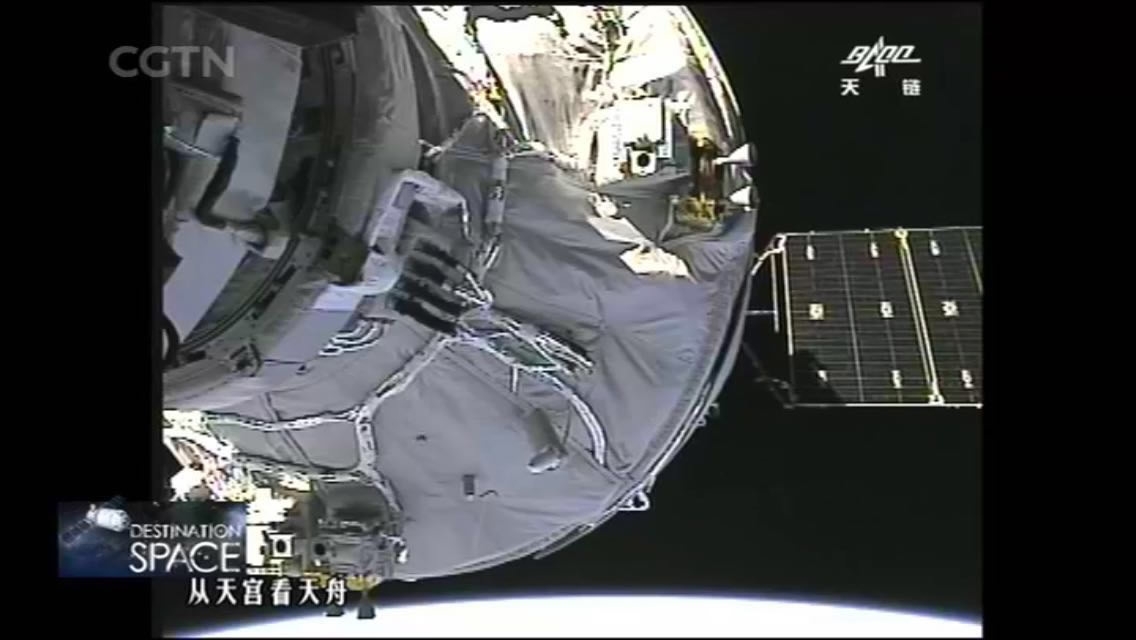
View from Tiangong-2. /CGTN Photo
View from Tiangong-2. /CGTN Photo
“The ability of docking in a shorter amount of time will enable the astronauts to reach the space station faster and ensure swift transport of biological products to the station, as well as timely rescues during emergencies," said Liu Zongyu, designer of the Tianzhou-1.
Major challenges during docking
The Chinese spacecraft will use Lithium-ion batteries in space for the first time. Chen Qizhong, deputy chief designer of the cargo ship system, told CGTN officials have to be prepared for emergencies.
“The power sub-system is one of the most important components in a spacecraft. It is equivalent to a power station on earth providing electricity for every piece of equipment. It is like our heart,” Chen told CGTN.
“After the docking process, the propellant tube and coupling part should be perfectly matched, with a margin of error less than 1 millimeter. It's not easy to control a huge system, but through intensive design and control technology, we will make it,” he said.
Scientific experiments in space
Scientific experiments will also be conducted during the mission. Researchers will take advantage of the zero- gravity environment to test a new kind of medicine designed to treat bone loss.
"It should be the first of its kind. We haven't seen any coverage of such an experiment in foreign reports. Of course, it's the first in China," said Chen Guoqiang, director of the Center for Synthetic and Systems Biology at Tsinghua University.
The treatment could help astronauts on long space missions, and may be used to treat osteoporosis patients on earth.
Scientists will also for the first time begin a study to determine if humans can reproduce in space. They will conduct an experiment to induce the differentiation of human embryonic stem cells into germ cells on the Tianzhou-1.
Lessons learned from Tianzhou-1’s upcoming months-long mission are expected to help China pursue its ultimate goal: a permanently manned space station by 2022.
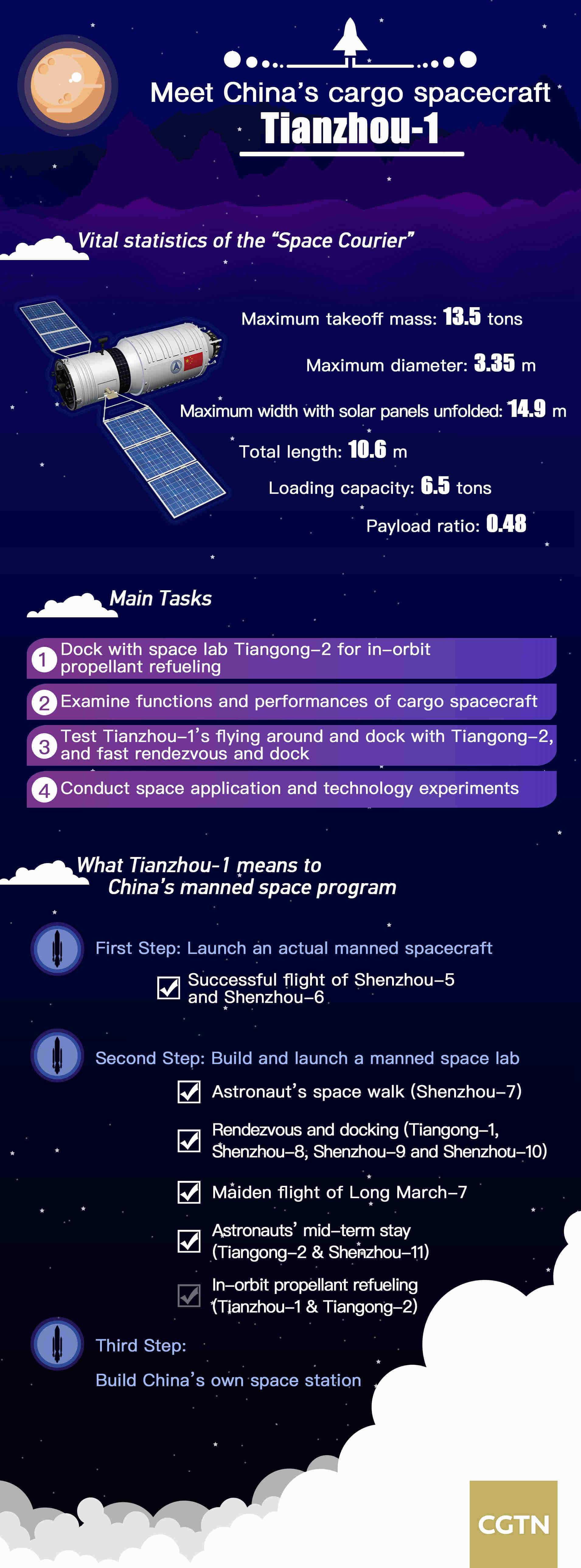
CGTN Graphic
CGTN Graphic

SITEMAP
Copyright © 2018 CGTN. Beijing ICP prepared NO.16065310-3
Copyright © 2018 CGTN. Beijing ICP prepared NO.16065310-3